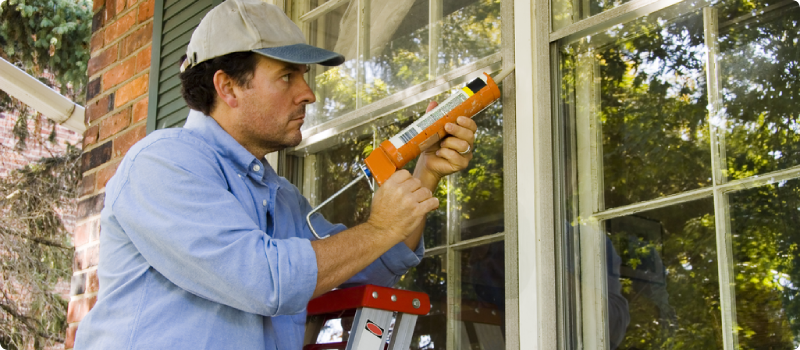How to prevent pipes from freezing
Updated May 3, 2024 . AmFam Team
The season is changing and winter is on its way. And with the cold temperature it brings, some potential troubles could follow — among them, freezing and busting pipes. Take these tips into consideration, though, and you’ll be more than ready to prevent your pipes from freezing and keep water flowing this winter.
Freezing and bursting pipe basics
Even in warm states, winter weather can freeze water pipes. Many states will experience these types of temps at least once or twice each winter.
When pipes freeze, pressure builds and could result in them bursting at their weakest point, potentially causing water damage to your cozy home. Pipes in attics, crawl spaces and outside walls are particularly vulnerable, especially when they’re subjected to extra cold air coming through utility line holes.
At what temperatures do pipes freeze in a house?
We all know that freezing begins at 32° F or 0° C, but at what point do pipes freeze within our own homes?
Temperatures only need to drop to about 20° F for a few hours to put exposed pipes at risk. So, your best bet is to insulate your exposed pipes to keep that temperature well above the freezing point.
This is just one quick tip, below we’ll fully answer the question of how to prevent pipes from freezing.
The 9 best ways to keep your pipes from freezing
The key to keeping your pipes away from freezing temperatures this isn’t reaction — it’s preparation. Check out these tips on how to help you prevent the risk of your pipes even coming close to freezing temperatures.
1. Cover exposed pipes with insulation sleeves
Insulation sleeves, usually made of foam and found at just about any hardware store, are cheap ways to surround your pipes with warmth and keep them from freezing in the cold temperatures. They’re affordable and easy to install, making them an excellent alternative to paying thousands of dollars to fix a frozen and burst pipe.

2. Seal cracks in the walls that let cold air in
A small crack in your wall that lets in a small account of cold air might not seem like a big deal but add all those little cracks together and you’ll find out that they’re costing you quite a bit of money on your heating bill and doing damage to your pipes, too. Use weather stripping to stop the air from getting in and consider picking up a couple of draft stoppers for your doors to the outside. They’re both easy to install, help prevent your pipes from freezing and even easier to remove come springtime.
3. Turn off and empty outdoor faucets
A pipe without water in it won’t be able to freeze or burst, so make sure you turn off any outdoor faucets. After shutting them off, open the faucet to drain any remaining water. While you’re at it, disconnect and store any hoses you might have left outdoors so they don’t become damaged by the freezing temperatures.
4. Keep cabinet doors open below your sinks to allow warm air in
The pipes under your sink probably aren’t insulated, and the doors block the heat from other parts of your home from getting to them, which may make your pipes freeze. If you have children or pets, make sure you remove any hazardous chemicals or cleaning materials before leaving the cabinets open.
5. Pay attention to pipes in unheated areas of your home
Pipes in your attic and basement run a higher risk of freezing than your main-level pipes, so make sure to take all tips into consideration and pay special attention to those areas.
6. Keep your garage doors closed
Not only will closing your garage doors keep critters and intruders from getting into your stuff, but it’ll also keep your garage warmer and add an extra layer of protection to stop any pipes from freezing in your garage or along its walls.

7. Keep your home’s temperature the same day and night
While you can save some money by lowering your home’s temperatures while you’re not there (or by letting a smart thermostat do it for you), you can feel better about your pipes staying in good condition if you keep your home at a steady temperature day and night.
8. Open up interior faucets
If a cold snap is fast on the way and you don’t have time to take all the previous recommended steps, you can still help prevent frozen pipes with a simple turn of the faucet handle. Open your faucets just slightly to allow a small flow of water. Moving water is less likely to freeze, and it relieves excess pressure that builds if freezing does occur.
9. Winterize your other property, too
Your home isn’t the only building where pipes can freeze and fall victim to the cold weather. If you have a vacation home, rental property, detached garage, shed or other type of building, take the same precautions you would with your home to prevent an expensive and messy situation later on.
What to do if your pipes have already frozen?
If your pipes have already frozen and burst, the key to mitigating the damage is acting quickly and carefully. Before the winter ever hits, though, it’s worth contacting your American Family Insurance agent to go over your homeowners insurance and make sure your policy is set up to protect you in the event of the unexpected.
This article is for informational purposes only and based on information that is widely available. We do not make any guarantees or promise any results based on this information.

